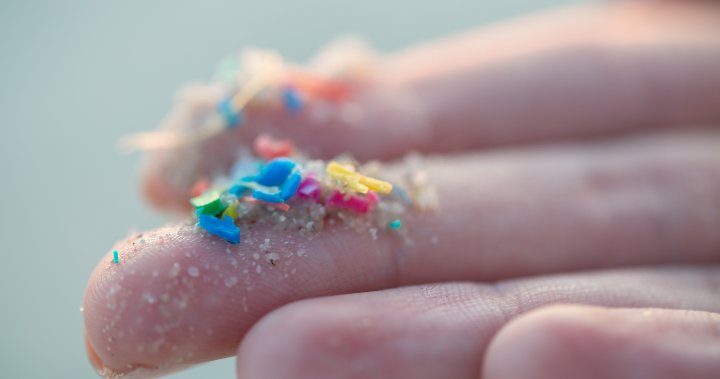Health Canada is funding new research that will look into the potential risk to humans of microplastics that are found everywhere and could be toxic.
Researchers at three Canadian universities — McGill University, Memorial University of Newfoundland and the University of Toronto — have been tasked to study “the potential exposure to microplastics from various sources, including food, food packaging, drinking water, indoor and outdoor air, as well as dust.”
“Collectively, these initiatives will improve the understanding of the potential impacts of microplastics on human health,” Health Canada said in a Jan. 22 release, announcing that $2.1 million over four years will go into the research.
The project builds on work that is already under way, with the aim of finding out to what extent humans are exposed to microplastics and whether that could lead to adverse health effects.
“There certainly is growing concern that (micro)plastic’s exposure could be toxic,” said Karl Jobst, an assistant professor of chemistry at Memorial University, who is involved in this research.

Jobst and his colleagues are building methods in laboratories to measure microplastics in blood, tissue samples, as well as drinking water and indoor air. They have already started to collect preliminary data.
Jobst told Global News the researchers will also try to identify whether microplastics carry a range of chemical pollutants that could be harmful.
“All of that information that we hope to gather will be new and we do think that is an important complement to what is known already about microplastics,” he said in an interview.
Microplastics are tiny plastic particles, usually five millimetres or less in size, that are formed by breaking away from larger plastics found in our environment.
The wear and tear of car tires is a major source of microplastics.
Get the latest Health IQ news.
Sent to your email, every week.
They can also come from microbeads that are found in toiletries and microfibres that are released from clothes. In Canada, the manufacture, import and sale of all toiletries that contain plastic microbeads is prohibited by law.
This Jan. 19, 2020 photo shows microplastic debris that has washed up at Depoe Bay, Ore. Dozens of scientists from around the U.S. West will attend a gathering this week in Bremerton, Wash., to better focus the research on the environmental threat.
AP Photo/Andrew Selsky
According to Health Canada, people can get exposed to microplastics by eating food, drinking bottled or tap water as well as through breathing air. Hence, they are hard to avoid.
A study published last month revealed that the average litre of bottled water has nearly a quarter million invisible pieces of nanoplastics — that are less than a micron in size. To put that into context, a human hair is about 83 microns wide.
Jobst said microplastics and nanoplastics can potentially accumulate in humans.
But there are still many unanswered questions on the exact amount of exposure and how harmful these can be.
“There is a lot we don’t know about the effect of microplastics on human health,” said Health Minister Mark Holland in a statement last week.
What are the potential risks of microplastics?
Some animal studies have pointed to adverse health impacts of microplastics, but experts say more research is needed.
A 2018 study in mice showed that microplastic inhalation may lead to various gastrointestinal symptoms, such as abdominal pain, bloating, and changes in bowel habits.
Other experiments have suggested that if microplastics are inhaled they could have a negative impact on the respiratory system, leading to coughing, sneezing, shortness of breath as well as fatigue and dizziness due to low blood oxygen concentration.
A study published last year suggested that microplastics particles can be found in human airways, meaning they can be inhaled.

Scientists have also raised concerns about the potential effect on fetal development after experts found — for the first time — microplastics in the human placenta of four pregnant women.
Meanwhile, some experts speculate that the exposure of microplastics may be related to the formation of various chronic diseases.
According to Jobst, microplastics could potentially be a vehicle for exposure to other contaminants like plasticizers and flame retardants.

Canadians throw away more than three million tonnes of plastic waste every year, out of which only nine per cent is recycled, according to Environment and Climate Change Canada.
The federal government has set a 2030 target to achieve zero plastic waste, aiming to extend the life of products and divert at least 75 per cent of plastic waste from federal operations by that year.
To meet that goal, a ban on single-use plastics, that started in December 2022, is gradually being rolled out in phases.
Jobst said that while much of the research on microplastics has focused on marine environment, there’s “comparatively little research on the potential health impacts.”
He is hopeful their studies can help fill those research gaps.
Jobst said they plan to slowly release data and publish their findings every year or so.
— with files from the Associated Press
© 2024 Global News, a division of Corus Entertainment Inc.










